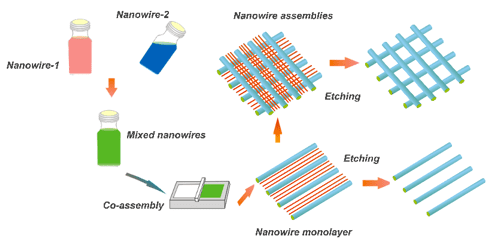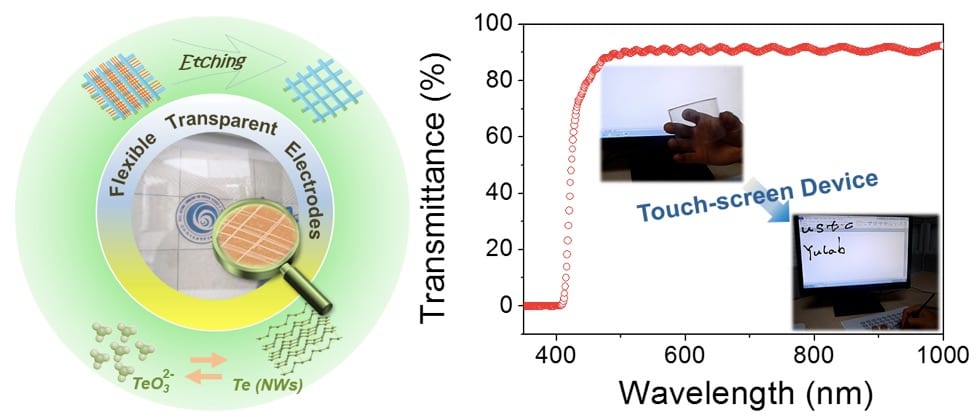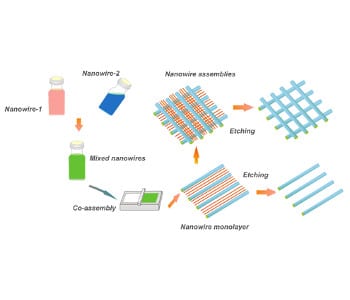In contrast to rigid and opaque electrical devices, the successful fabrication of many modern optoelectronic devices including touch screens, organic light-emitting diodes (OLEDs), electronic displays, and solar cells, requires electrodes flexible, transparent and with high conductivity. To address extremely flexible transparent conducting electrodes to combine and balance optical transparency and electrical conductivity, Shu-Hong Yu and his research group from the University of Science and Technology of China (USTC) proposed a new nanowire assembly strategy to fabricate flexible transparent electrodes by precisely manipulating Ag nanowire networks. The results have been published on Dec. 1st in Angewandte Chemie International Edition (Angew. Chem.-Int. Ed. 2014, 53(49), 133477-13482) as a VIP paper with the title of “Manipulating nanowire assembly for flexible transparent electrodes”.

Figure 1. Schematic illustration of nanowire assembly manipulating for flexible transparent electrodes
Researchers report a new solution based approach for manipulating nanowire assembly and fabricating large-area nanowire networks with tunable pitch (distance between two adjacent nanwires), which can be used to produce large-area flexible transparent conducting electrodes. Briefly, coassembly Ag nanowires and Te nanowires using Langmuir-Blodgett (LB) technique, then selectively etched Te nanowires, leaving Ag nanowires with tunable pitch (Figure 1). Such flexible transparent conducting electrode by manipulating nanowire assembly shows an averaged transmission up to 97.3% (Figure 2) for the best transmitting network and sheet resistances as low as 2.7 Ω/sq, which has better performance than an 80 nm thick layer of ITO sputtered on glass.
To demonstrate the stability of this new kind of nanowire assemblies, Yu’s team tested their mechanical properties and electrical properties immersion in liquid. After manipulating nanowire assembly, the nanowire electrodes keep their conductivity even the device was twisted in water or ethanol. To validate the practical application of current technology, Yu’s team tested and fabricated Ag nanowire transparent electrodes which were applied to a touch panel screen demonstration as shown in the inset of Figure 2, writing the characters “USTC” and “Yu lab”.
This versatile strategy will provide optimum possibilities for the large-scale fabrication of flexible and transparent electrodes exhibiting a good compromise between optical transparency and electrical conductivity.

Figure 2. Left, Schematic illustration of nanowire assembly manipulating for flexible transparent electrodes. Right, the optical transmittance spectra of the nanowire based transparent electrodes (inset: touch screen operation fabricated touch panel demonstrated by nanowire assembly engineered Ag nanowire electrode).
This research project is sponsored by the National Basic Research Program of China, the National Natural Science Foundation of China and the Chinese Academy of Sciences.

















